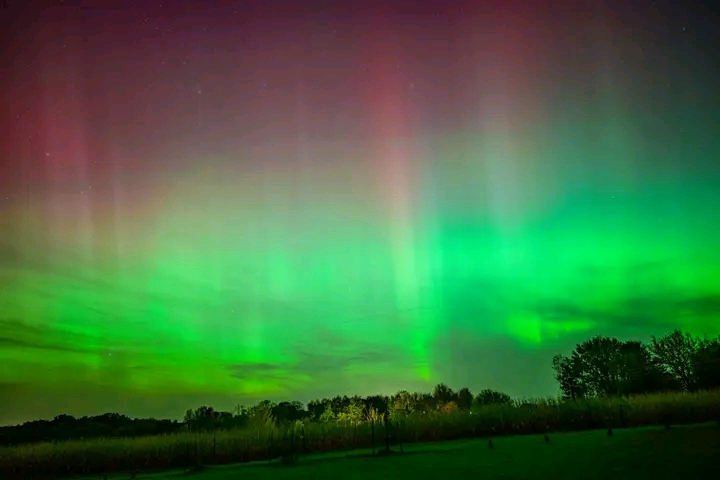
Report: (NOAA) Provides Shocking Update on Solar Storm Warning and Northern Lights Visibility to hit parts of the northern United States, UK and Northern Europe
In an unexpected turn of events, a major update on the solar storm activity has sent both the scientific community and aurora enthusiasts into a frenzy. Experts from the National Oceanic and Atmospheric Administration (NOAA) have issued a solar storm warning, signaling that a significant geomagnetic storm may hit Earth in the coming days. This storm, caused by a coronal mass ejection (CME) from the Sun, has the potential to trigger widespread visibility of the Northern Lights (aurora borealis) much farther south than usual.
According to the NOAA’s Space Weather Prediction Center, the solar storm is expected to produce geomagnetic disturbances rated as G3 on a scale of G1 to G5, with G5 being the strongest. While such storms are not uncommon, this particular event has gained attention due to its potential to create stunning aurora displays in areas that don’t usually experience them, including parts of the northern United States, the UK, and even northern Europe.
Aurora tracking groups and Northern Lights watchers across social media platforms have been buzzing with anticipation. Popular Facebook groups like Northern Lights Watch and Aurora Borealis Tracker have seen a surge in membership and activity as people seek real-time updates on when and where the lights might be visible. A resource update shared by one of the groups provided a surprising forecast: the auroras may extend visibility to regions as far south as Ohio and Pennsylvania in the U.S. and possibly as far as Ireland and Scotland in Europe.
NOAA advises that, while the solar storm poses no direct danger to people, it could cause disruptions to GPS systems, satellite communications, and even power grids in extreme cases. However, for those tracking the aurora, this is a rare and exciting opportunity to witness one of nature’s most spectacular phenomena.
If skies remain clear, the next few nights could provide millions of people with a once-in-a-lifetime chance to see the vibrant greens, purples, and pinks of the Northern Lights overhead. Enthusiasts are encouraged to keep an eye on solar weather forecasts and to head to dark, open areas with minimal light pollution for the best chances of catching the auroras.





